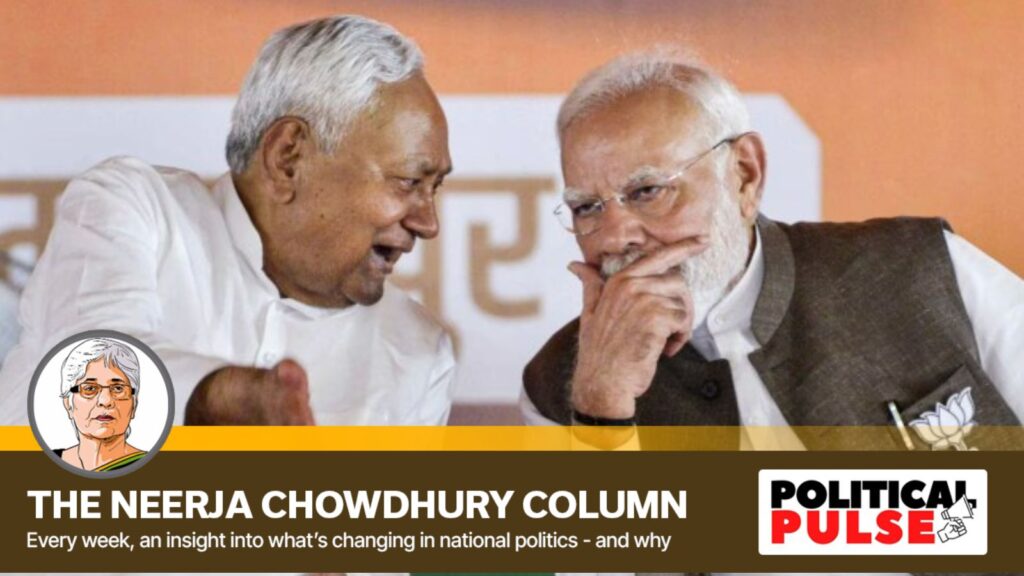The NDA’s landslide win in Bihar was, above all, about Nitish Kumar and Biharis’ “sahanubhuti (sympathy)” for their leader and what many said “shraddha (respect)” for his stewardship over the last two decades.
Many CMs have been in power for longer than Nitish, but such a pro-incumbency wave has not been seen in recent years. Those who heard the ground chatter in Bihar realised there was no anger against the CM this time. If anything, there was an element of sympathy for him now that he is growing old, with many saying that whatever he had done was for Bihar — empowering the Extremely Backward Classes (EBCs), Mahadalits, and women — and “not for his family”. Perhaps the only note of concern for the otherwise ascendant JD(U) is that the CM has not yet named his successor.
The unprecedented scale of the victory and the collapse of the Opposition took many aback, with Leader of Opposition Rahul Gandhi alleging that the poll was “unfair” from the beginning. Others see the historic 10 percentage point rise in voter turnout and the 9 percentage point lead that women voters registered over men as explanations for the sweep.
The scale of this loss may affect Opposition morale. With major elections due in several major states in the next couple of years, this is bad news for the Opposition. Tejashwi Yadav, who won from Raghopur after a close contest that went on till the final rounds of counting, will now be called on to re-energise the RJD cadre, reinvent the Mahagathbandhan, and include the political energies unleashed by Prashant Kishor’s Jan Suraaj.
What the NDA got right was the cohesion in its alliance. This time, Chirag Paswan, who had damaged Nitish Kumar’s JD(U) in as many as 28 seats in 2020, batted on the NDA side and helped consolidate Dalits behind the coalition. He was one of the two leaders Nitish Kumar called on during the Chatth Puja festival, and they decided to bury any differences they may have had. The EBCs, a constituency that Nitish has cultivated, also stood behind the NDA. The aggression of the Yadavs likely produced a backlash among the EBCs, who rallied behind the CM, their “Sushasan Babu” who brought peace and safety to Bihar after the law-and-order troubles during Lalu Prasad-Rabri Devi rule.
However, to borrow Robert Frost’s words, Nitish has many “promises to keep” and “miles to go” before he sleeps, in order to give an economic content to the “social justice” he and Lalu Prasad champion. For, the state’s per capita income is still less than one-third the national average, and around 64% of its families earn less than Rs 10,000 a month. And the literacy rate amongst Musahar (Dalit) women was only 1.5% as per the 2011 Census.
With people yet again choosing to repose their faith in him, Nitish knows his focus, as he had once told a group of bureaucrats, has to be on “governance, governance and governance”. Long before the Ujjwala scheme or the Beti Bachao, Beti Padhao were conceived, he had sensed the political awakening taking place among women. His seminal contribution was to provide them with the tools to achieve their dreams: be it a bicycle, a uniform, reservation in local bodies, government jobs, and the police, or Prohibition to lessen the domestic violence many women suffer.
So, when the JD(U) leader put Rs 10,000 in the accounts of almost 1.51 crore women to start small ventures — these “Jeevika didis”, as they are known, are trained to motivate others — it fired a hope in others that they too would get it if they brought the NDA back to power. It had all the makings of a game-changer. Now, all the CMs can be expected to emulate the Nitish model. It holds out a hope for them that they can remain in power by creating a pro-incumbency model with populism, social welfarism, and women at the heart of it.
BJP’s flexibility
However, as Nitish has gained, so has the BJP, emerging as the single-largest party for the first time in the state. Both have shown a tolerance for each other’s positions. Bureaucrats were given strict instructions to deal with any communal conflagration, and there is hardly any anti-Muslim sentiment in Bihar today of the kind that exists in neighbouring Uttar Pradesh.
The BJP, on its part, also displayed a flexibility in accepting Nitish and his leadership. It did not insist on its Hindutva agenda or leading the government, though Nitish was the smaller of the two allies. The BJP’s growth in Bihar has been for reasons other than Hindutva, a model that it could look at in other states too.
The first note Prime Minister Narendra Modi struck after the result was to emphasise “social justice” as his goal, besides focusing on development and governance. The very idea of it is embedded in the “mitti (soil)” of Bihar, which has been the crucible of many a movement, including those led by Karpoori Thakur and Jayaprakash Narayan, and was the laboratory of “Mandal” politics for empowering the backward classes. The BJP is not likely to trifle with the sentiments expressed by the people of Bihar for Nitish Kumar, choosing to run the show from behind the scenes and bide its time to lead the government.
(Neerja Chowdhury, Contributing Editor, The Indian Express, has covered the last 11 Lok Sabha elections. She is the author of How Prime Ministers Decide.)

